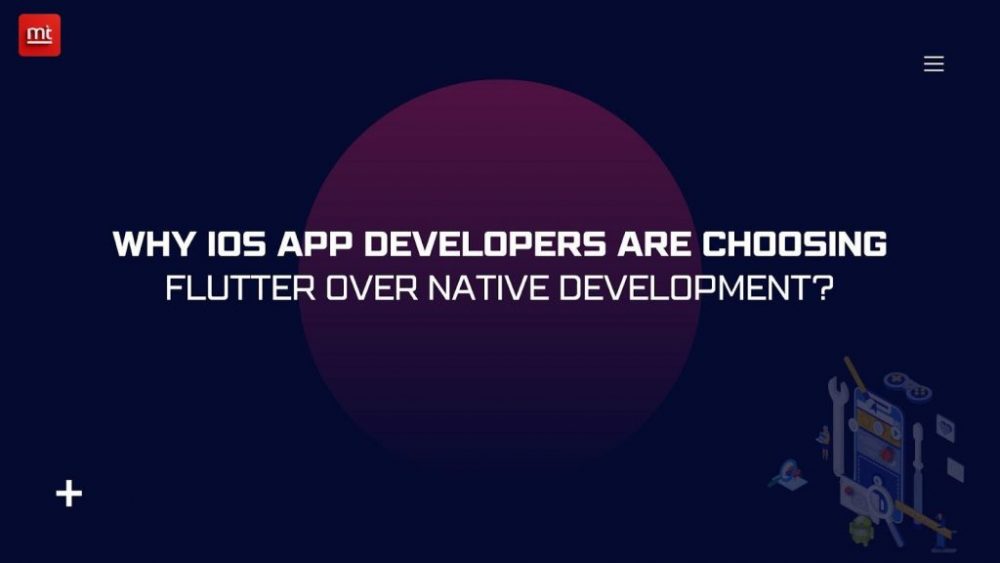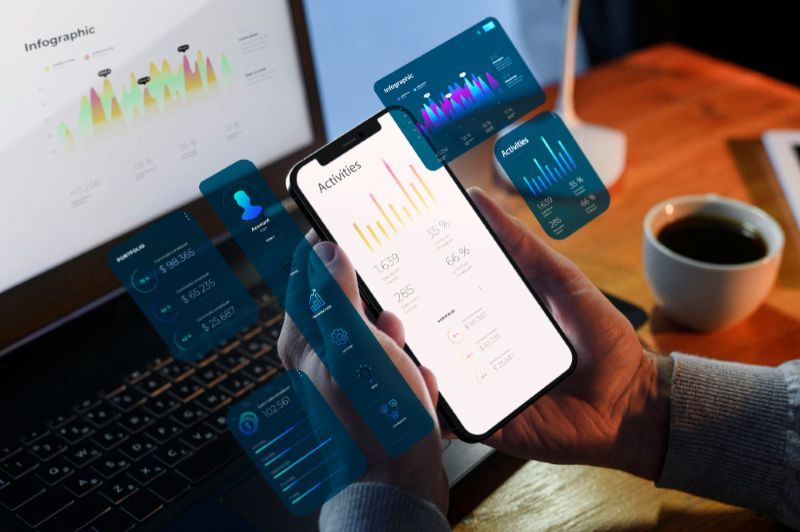
Native iOS app development has been ruling the mobile industry over years. Objective-C and Swift provided the developers with unrestricted authority over performance and design.
However the mobile environment is evolving rapidly. Businesses today desire rapid development, reduced cost, multi-platform support as well as increased flexibility. Consequently, most of the developers and even the leading iOS app development company USA are moving to Flutter.
Flutter is an iOS and Android UI toolkit in Google, which enables developers to create apps with a single codebase on both platforms. According to a survey, Flutter is the most popular cross-platform mobile framework used by global developers.
It has already become one of the most popular app development frameworks. It is in this respect that most iOS developers are abandoning native development in favor of Flutter.
How Flutter Speeds Up Development with a Single Codebase
Flutter lets developers build iOS and Android apps using one codebase, cutting development time, reducing costs, and speeding up time-to-market.
Faster development with a single codebase
Building indigenous apps needs iOS and Android code. Flutter eliminates this. The developers will be able to code once and deploy it on any platform making the development time cut by about half. To the companies, it is a quicker time to market and less expenditure on extra resources.
This is among the largest factors that lead companies to use Flutter when outsourcing and hire iPhone app developers, particularly MVPs and coming out with a new product.
Beautiful UI that looks native on every device
The architecture used in Flutter as a widget-driven application enables developers to create pixel-perfect apps of high quality. Its customizable widgets are based on native iOS design patterns and are performance-oriented. Rather than having to adapt interfaces by hand to match the size of screens or other hardware, developers can turn to the adaptive UI library of Flutter.
In the case of the businesses that market popular app ideas, this makes the app appear high-end on all the devices without necessarily doubling up design work.
Incredible performance close to native
Performance is also one of the largest concerns of iOS developers in case of cross-platform tools. Flutter addresses this using its special rendering engine.
In comparison to other frameworks, Flutter does not use WebView or OEM widgets. Rather, it direct compiles into ARM code, giving:
- Faster animations
- Smooth scrolling
- Reduced latency
This gives performance levels almost identical to native Swift apps
Hot reload helps developers work smarter, not harder
Hot Reload allows the developers to view the updates in real time without re-launching the app. This speeds up testing, UI modification and debugging. In the case of teams that provide app development services in USA, this feature can greatly enhance productivity and shorten their development cycles. Native development continues to be slower, i.e. Flutter provides developers with greater speed and flexibility.
Lower development and maintenance cost
iOS and Android apps will be expensive to build and maintain. Flutter reduces this by:
- Using a single codebase
- Offering reusable components
- Simplifying updates across platforms
Companies that collaborate with a native app development company tend to move to the Flutter platform as it can enable them to reduce the development rates without compromising the quality.
A strong developer community backing flutter
Flutter has a growing community, is well documented, and offers a large number of open-source packages, making iOS app development easier. APIs, animations, maps, payment systems, and back-end services can be integrated into apps with ease.
This community-oriented assistance is encouraging even experienced Swift developers to use Flutter as their favorite framework.
Ideal for cross-platform business apps
Modern businesses want apps that run everywhere, not just on iPhones.
Flutter supports:
- iOS
- Android
- Web
- Desktop
- Embedded devices
This makes Flutter the perfect choice for businesses seeking cross platform app development services with maximum reach and lower investment. iOS developers expand their portfolio instantly by learning Flutter instead of building exclusively for Apple devices.
Consistency across devices and platforms
The native applications usually need platform-specific modification to provide visual and functional compatibility. Flutter does not have such inconsistencies as it has its rendering engine.
This will make your app appear and feel the same on:
- iPhone
- iPad
- Android phones
- Tablets
- Web browsers
Businesses love this because it maintains brand identity across all customer touchpoints.
A better choice for rapid prototyping and mvps
Flutter can be used for prototyping in a staggeringly short time when starting to build popular app ideas or experimenting with popular apps ideas. Native development is much slower than business establishments can validate concepts with an MVP. Hot Reload and reusable components allow developers to start experimenting, refine features and make UI better.
Future-ready and backed by Google
Flutter has strong long-term support. Google actively invests in:
- Performance improvements
- New UI widgets
- Platform stability
- Enhanced developer tools
This assures developers and businesses that Flutter will continue evolving. Even many traditional native app development company teams are adopting Flutter as a core offering due to its future growth potential.
Conclusion
The transition to Flutter is a significant shift in the mobile app sector. Developers desire speed, flexibility, and efficiency. Companies desire affordable, more expansive and quicker penetrations. All of this is provided in a single toolkit by Flutter.
It’s no surprise that developers working with an iOS app development company USA are increasingly choosing Flutter, especially when clients want modern, scalable, and multi-platform apps. Whether you want to speed up delivery, reduce cost, or expand reach, Flutter gives you an advantage that traditional native development cannot always match.





